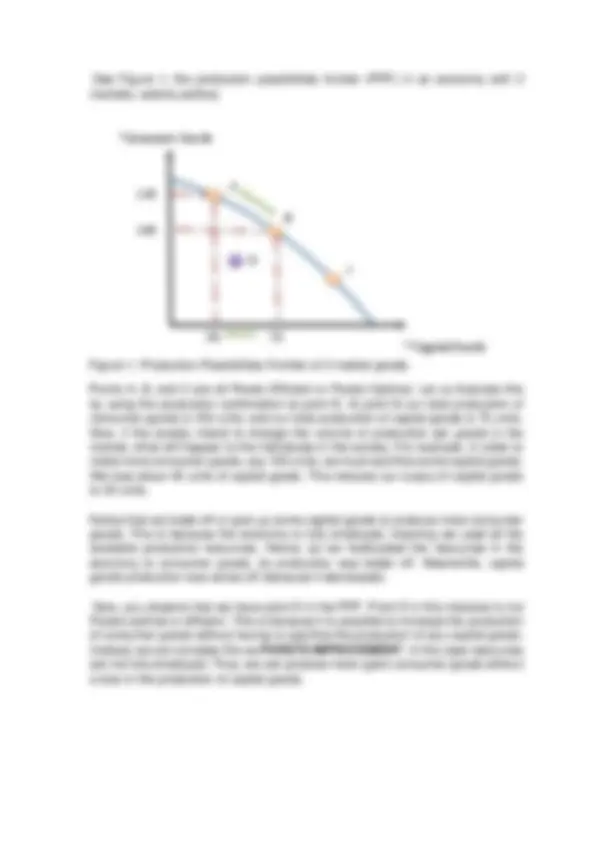



Study with the several resources on Docsity

Earn points by helping other students or get them with a premium plan


Prepare for your exams
Study with the several resources on Docsity

Earn points to download
Earn points by helping other students or get them with a premium plan
Community
Ask the community for help and clear up your study doubts
Discover the best universities in your country according to Docsity users
Free resources
Download our free guides on studying techniques, anxiety management strategies, and thesis advice from Docsity tutors
If you have limited resources, you are bound to make a decision. This is to assure that your choices are the best possible options. Perhaps, you are thinking what are the possible gadgets, clothes, shoes, or cosmetics you should buy? Or maybe you are thinking of saving your money, or sending food to your close friends? Anything under the sun is a possible option but should be within the budget and fits your preferences.
Typology: Lecture notes
1 / 2

This page cannot be seen from the preview
Don't miss anything!


Pareto Optimality If you have limited resources, you are bound to make decision. This is to assure that your choices are the best possible options. Perhaps, you are thinking what are the possible gadgets, clothes, shoes, or cosmetics you should buy? Or maybe you are thinking on saving your money, or sending foods to your close friends? Anything under the sun is a possible option but should be within the budget and fits your preferences. Such concept is true in the modern welfare economic analysis. A consumer must make choices given with limited income at his/her disposal. But one thing is for sure, he/she cannot pay for unlimited quantities of all goods and services he finds desirable. You might say that this concept familiar, yes? This is because this is the very concept presented in your microeconomics, particularly the c onsumer choice and theory of production. Both are quite similar to some aspects in terms of decision making. Similarly, societies must make decisions about how to employ their limited labor, capital, natural resources, and other resources. The total number of resources available at any given time can be considered fixed, suggesting that we must make trade-offs. When we ask for more of one thing, we are frequently asking for less of another, and that is trade-off. Furthermore, in any such changes of the societies’ decision-making may affect millions of households. Hence, it is safe to anticipate that there will be winners and losers from such changes. This triggers the question of whether a change is desirable in the numerous circumstances where there is no consensus among the societies. The concept of winners and losers in the change of allocation of resources in the society is directed to the concept called Pareto optimality. According to Vilfredo Pareto, a PARETO OPTIMALITY or PARETO EFFICIENCY. “ An economy is in a Pareto Optimal state when no further changes in the economy can make one person better off without at the same time making another worse off”. Pareto Optimality is quite a challenge to illustrate but let us recall first the microeconomic concepts particularly the production possibilities frontier to fully grasp the idea. On a more specific note, Pareto optimality represents a situation in which resources in the economy are fully employed and therefore increasing production of one good requires sacrificing the production of another. There is a trade-off in terms of the allocation of the resources. However, Pareto optimality does not factor in the fairness or equality.
See Figure 1 , the production possibilities frontier (PPF) in an economy with 2 markets, ceteris paribus. Figure 1. Production Possibilities Frontier of 2 market goods. Points A, B, and C are all Pareto Efficient or Pareto Optimal. Let us illustrate this by using the production combination at point B. At point B our total production of consumer goods is 100 units, and our total production of capital goods is 75 units. Now, if the society intend to change the volume of production per goods in the market, what will happen to the individuals in the society. For example, in order to make more consumer goods, say 120 units, we must sacrifice some capital goods. We lose about 45 units of capital goods. This reduces our output of capital goods to 30 units. Notice that we trade-off or give up some capital goods to produce more consumer goods. This is because the economy is fully employed, meaning we used all the available productive resources. Hence, as we reallocated the resources in the economy to consumer goods, its production was better off. Meanwhile, capital goods production was worse off (because it decreased). Now, you observe that we have point D in the PPF. Point D in this instance is not Pareto optimal or efficient. This is because it is possible to increase the production of consumer goods without having to sacrifice the production of any capital goods. Instead, we can consider this as PARETO IMPROVEMENT. In this case resources are not fully employed. Thus, we can produce more (gain) consumer goods without a loss in the production of capital goods. *Consumer Goods **Capital Goods
c